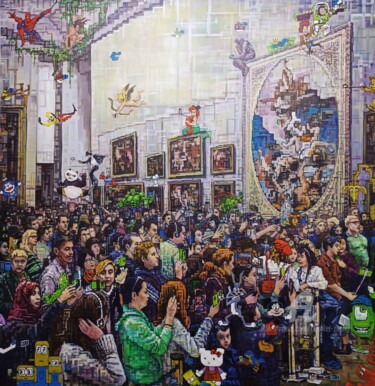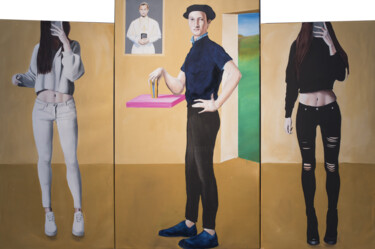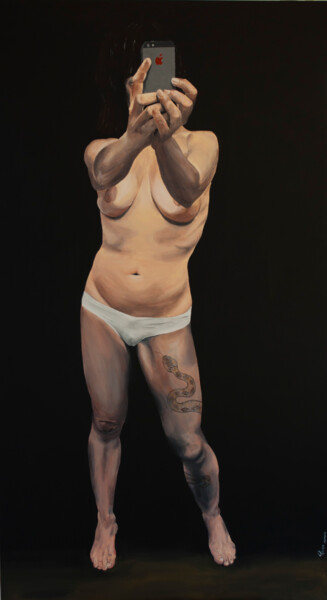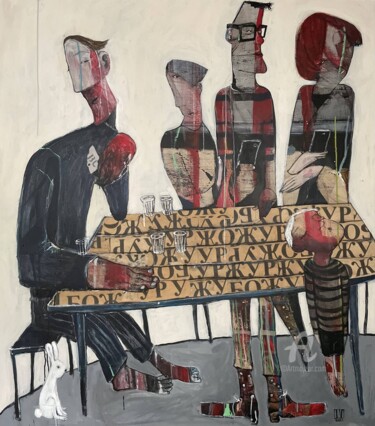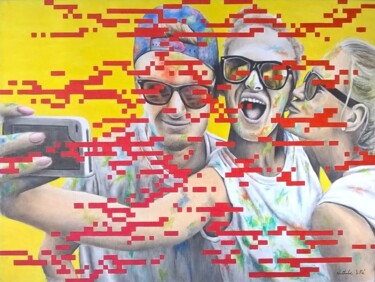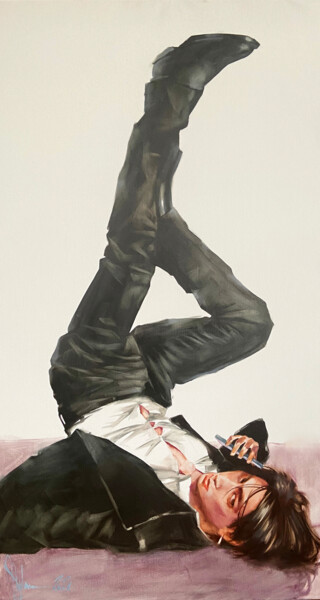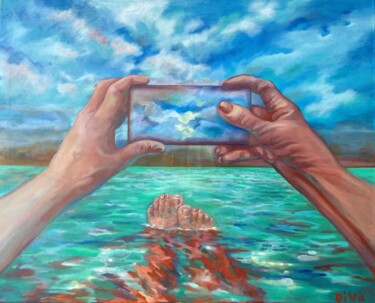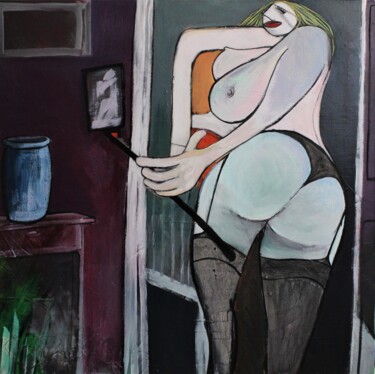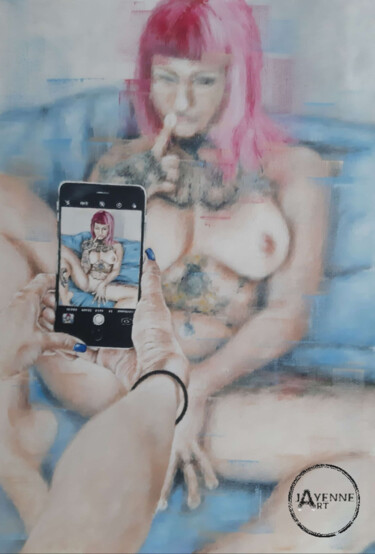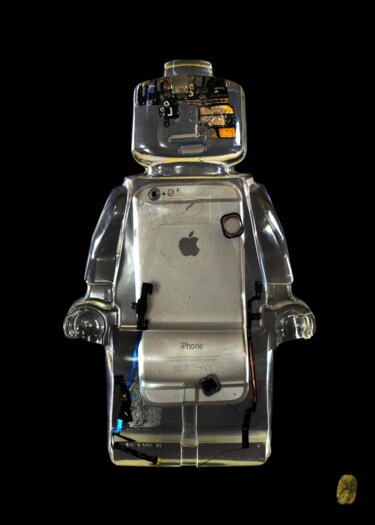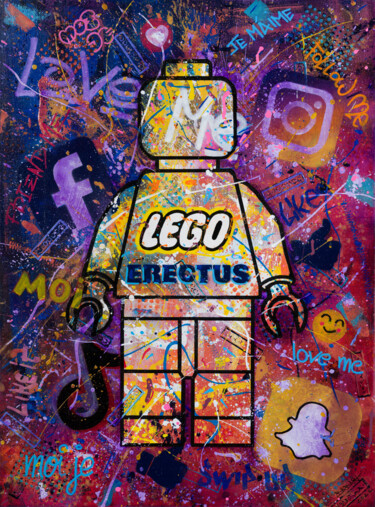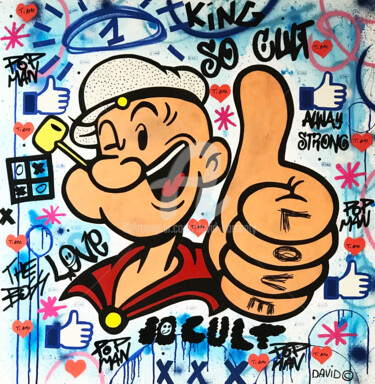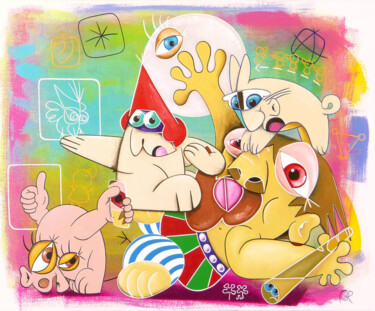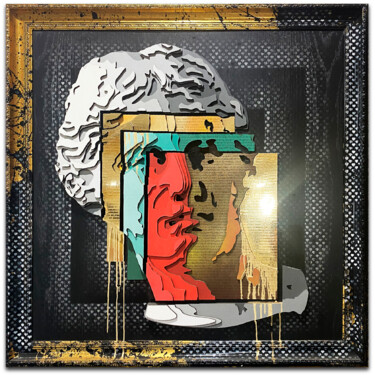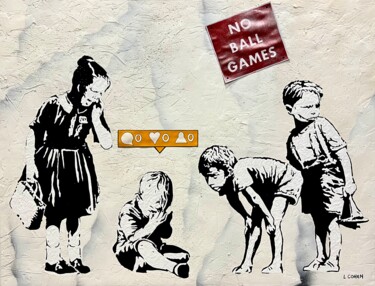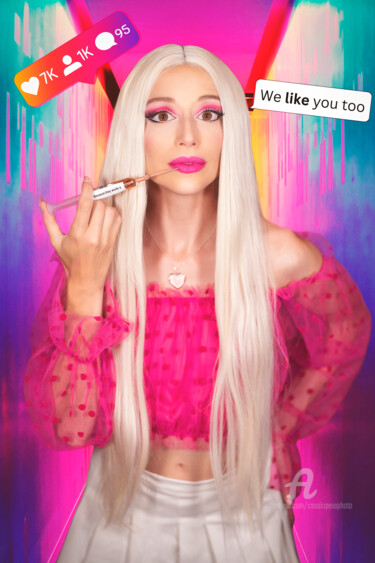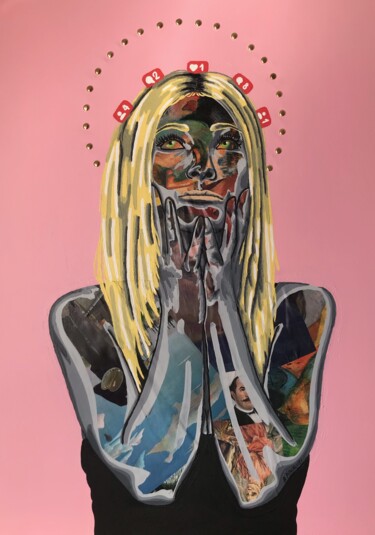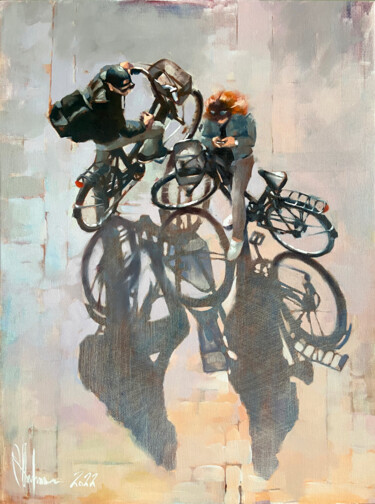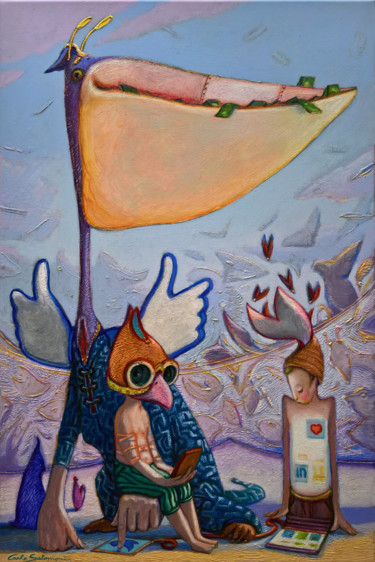 KNOWLEDGE IS THE ULTIMATE WEAPON (2022)Painting by Esteban Vera (EVera).
KNOWLEDGE IS THE ULTIMATE WEAPON (2022)Painting by Esteban Vera (EVera).
 "FACELESS" (2022)Sculpture by Mammad Rashidov.
"FACELESS" (2022)Sculpture by Mammad Rashidov.
Facebook, Instagram and Twitter in painting!
I wanted to make an investigation, in order to understand whether the iconography of social media had somehow managed to enter the artistic language, tracing in part the now well-known lesson of Pop art in the 1950s, which debuted and displaced, introducing into the creative world, images taken from the media and popular culture, representing a change, which continues to reinvent itself to this day, making manifest the latest trends in communication, inexorable mirror of the mass consumer society. Consequently, mainly researching the "reuse," reinterpretation, enrichment and actualization of all, or some, of the aforementioned Pop principles, by the visions and languages of contemporary art, I sifted through the Artmajeur data base, where, through the use of precise keywords, such as Facebook, Instagram and Twitter, I actually managed to get in touch with paintings, sculptures and drawings inspired by these current social media. Mainly, the works that resulted from my investigation housed within them the logos in question, popular symbols aimed at becoming vehicles of new messages for art, unequivocally associated with the history of the aforementioned social media, as well as with the evolution of the features of their very popular brand. Therefore, in order to show you what has just been stated, I will start in the order of social media listed above, beginning with the first work that is the subject of my analysis: Mammad Rashidov's Faceless, a sculptural head in which the depiction of the human face is partly concealed by the Facebook logo, which, carved into the "flesh," is superimposed on it almost concealing it, which makes me think about how, by now, our real identities turn out to be rather compromised, since they are indelibly associated with online ones, which, when they do not exist, effectively deprive the subjects of a very vivid part, as well as mode, of human interaction. The man, who hardly exists anymore unless he connects online and comments on images with hearts, likes and smilies, thus seems to have incorporated into his own identity, augmenting it, the logo of Mark Zuckerberg's most famous son, now presenting in his face the signs of his double identity, that is, of his double life, punctuated by the moments when he actually breathes and those in which it is only his photographic image that does it for him. The logo that appears in the Artmajeur artist's work, on the other hand, adds additional meanings to the sculpture, as it tells us how the symbol of Facebook became established in the explication of the company's name, which, written in lowercase letters on a blue rectangle, seemed to give voice to a color choice perhaps dictated by Zuckerberg's red-green deuteranopia-daltonism. Despite some changes in the latter, of interest to us is actually the social media icon, Mammad Rashidov's actual subject, which, over the years has become increasingly minimalist.
 THE INSTAGRAM COMET (2023)Painting by Mario Venza.
THE INSTAGRAM COMET (2023)Painting by Mario Venza.
 TWITTER 2.0 - SHITTER (2022)Painting by Deb Breton.
TWITTER 2.0 - SHITTER (2022)Painting by Deb Breton.
Regarding the Instagram logo, however, the latter has changed over the years while presenting one constant: the allusion to the shapes of an instant camera, intended to reflect the key designation of the reta, such as photo sharing. However, the symbol that appears in the Artmajeur work of interest to us, namely Mario Venza's The Instagram comets, is the current one, which, conceived in 2022, updated the 2016 logo, refining its color palette but retaining its concept and shapes. As for the Artmajeur artist's work, it seems to allude to Instagram's triumph over other social media, as its logo stands in front of, and in a larger format, other well-known icons, perhaps alluding to the fact that young people, between the ages of 18 and 29, are generally more attracted to the social media in question. This hypothesis could be in this sense confirmed by the young age of the female subject depicted in the canvas, ready to pose on Instagram certainly without taking into account how, censorship, could actually act on her rather explicit nudity. In addition, speaking of Twitter, noteworthy is Deb Breton's eponymous artwork, designed to besmirch the social media recently acquired by Elon Musk, a character who appears in the background laughing, surely unaware of the satirical reinterpretation of the old social media logo in question. The desecrating intent of of of the Artmajeur artist's painting is made explicit, in addition to the obvious iconography, by Breton's own description of the work, ready to reveal how the new Twitter 2.0. is actually a medium aimed at fostering the spread of hatred and conspiracy in the name of free speech. At this point I want to speak out to scale back the latter's point of view, in that social media is primarily made up of people, so rather than blaming Elon Musk, Mark Zuckerberg, etc., we should actually question the quality of the content that we, personally, share. Surely social media was not intended for the circulation of quality information, ready to promote the betterment of consciousness development, but each of us, free to act, could actually make an effort to spread and create something meaningful. At this point it is good to make it known how by now, however, Twitter's well-known little bird has been replaced by a less popular X symbol, which, wanted by new buyer Musk, does indeed seem to come short of the iconic allusion to the twittering of social media messages. Finally, the narrative shifts from Facebook, Instagram and Twitter to the apps of WhatsApp, GoogleMaps and Tinder, which will be narrated by other works that are part of Artmajeur's rich database!
 STAYING CONNECTED EVEN IN THE MIDST OF COVID 19 (2020)Painting by Samuel Itoya Odiboh.
STAYING CONNECTED EVEN IN THE MIDST OF COVID 19 (2020)Painting by Samuel Itoya Odiboh.
Samuel Itoya Odiboh: Staying connected even in the midst of Covid-19
As evident in the work of Artmajeur artist Odiboh, conceived at the time of the Covid-19 pandemic, human beings, despite the social distances imposed by the health emergency, have always been able to communicate, thanks to a multitude of social media and applications, among which, stands out, both in antiquity and immortal popularity: WhatsApp! The green logo of such a free messaging platform, mentioned by the painting in question, presents the purpose of manifesting the function of the app, as it is formed by some relatively simplistic design elements, consisting of a text comic strip, intended to symbolize a message sent or received, within which a phone has been inserted, capable of alluding to WhatsApp's secondary capability, namely that related to calls and videos. The only thing that remains illogical and somewhat contradictory is the fact that the phone in the logo is actually a stationary model and therefore incapable, unlike cell phones, of totally performing what is advertised. Despite this inconsistency, the message that Artmajeur's artist goes to great lengths to make explicit, depicting a woman equipped with a surgical mask holding a Smathphone, seems decidedly clear, as well as unexpectedly hopeful, as the Covid-19 pandemic has indeed demonstrated how technology represents a tool that can be relied upon to overcome difficulties, so much so that in Staying Connected Even in the Midst of Covid-19 the aforementioned logos are interpretable as superheroes, who intervene salvifically in the car of the protagonist, who is decisively tried by the bogeyman of illness and loneliness.
 TINDER’S ICON - OIL ON CANVAS (2020)Painting by Larisa Lavrova.
TINDER’S ICON - OIL ON CANVAS (2020)Painting by Larisa Lavrova.
Larisa Lavrova: Tinder's icon
Here are the words Lavrova uses to introduce her sensual oil: "Tinder's icon: that's the name of the artwork. It's not real, it's in your mind and in your phone. And maybe you will see it in reality, maybe not. But now you can only see her words on the phone chat and her pictures. So - it's just your imagination....." So, for those who still don't know, Tinder, which is explicitly referred to, both the title and the effigy's shirt, is one of the most popular mobile dating apps, within which users can scroll through photos of other users, liking people they like, perhaps to talk to them and then meet them live. The above is only possible if the object of our interest, after reciprocating our like, decides to respond to our messages, making it plausible that they exist in the real world. Once the coveted conversation has been initiated, one can, relatively in stages and depending on the intentions of the two parties, proceed toward an actual meeting, the only means by which it will be possible to understand whether the illusion fueled by the application's photographs and chat, will turn out to be yet another big blunder or the bargain of the century. Regarding Tinder's icon, it is worth clarifying how the subject matter of the artwork is at odds with the policies of the app in question, which actually does not accept nude photos, perhaps because a woman like the one depicted by Artmajeur's artist could actually send the entire system into a tailspin, which would be overloaded with men and women interested in seeing live what the image lends itself, illusorily or otherwise, to show. Finally, regarding Tinder's logo, Lavrova reinterpreted the one, which, as of 2017, is in use to this day, that is, a minimalist icon, in which the flame symbol has acquired a shaded texture with a more rounded shape, ranging from orange to pink.
 PANOPTIKON. (2022)Painting by Ziemowit Fincek.
PANOPTIKON. (2022)Painting by Ziemowit Fincek.
Ziemowit Fincek: Panoptikon
Even before there were stars, then there were maps, and, now, the reign of Google Maps, a geographic internet service developed by Google, which enables the search and display of maps of a large part of the earth, became so popular that it should be extended to private use as well, in order that, in the evantuality, it may even be possible to remind us where the bathroom in our house is located, since, by now, everyone seems to snub the surviving fans of the compass. Therefore, I feel like asking: where are you now? Are you sure? Have you asked Google Maps? Here, then, hope you will not find yourself in the location made explicit by Ziemowit Fincek's painting, or Panopticon, which, referring to the painter's description of the work, is the ideal prison designed in 1791 by the philosopher and jurist Jeremy Bentham, whose structure allowed prison guards to observe prisoners without knowing if and when they were being watched. Likewise awakens in me the terror the "share your location," tool, which, if actually left open without our knowledge, would allow Google Maps to let our husband know our lover's residence or make our mother aware of our strangest habits. At this point, it would perhaps be less risky, as Panoptikon's protagonist did, to cut off our hand, in such a way as to type in the place of our interest, without leaving any physical trace of our movement...


 Olimpia Gaia Martinelli
Olimpia Gaia Martinelli
